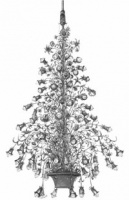
In February 1879 Mr Mattieu Williams, a journalist who had helped promote the Starr-King incandescent electric lamp 30 years earlier, wrote in the Journal of Science: ’I have abstained from further meddling with the electric light, because all that I had seen then, and have heard of since, has convinced me that although as a scientific achievement the electric light is a splendid success its practical application to all purposes where cost is a matter of serious consideration is a complete and hopeless failure.’
Three years later, The Engineer was adamant that Williams should give the incandescent light another chance. In an 1882 article, it argued that an exhibition of electric light at Crystal Palace proved that the technology would be a huge success.
’The raison d’être of the exhibition is to show that the electric light is not a failure, and that it daily promises to be as economical as the gas at present supplied,’ it said. ’We refer to a chandelier especially designed and made by Messrs Verity and Sons, of King Street, Covent Garden, for Mr EH Johnson, of the Edison Light Company.’
Register now to continue reading
Thanks for visiting The Engineer. You’ve now reached your monthly limit of premium content. Register for free to unlock unlimited access to all of our premium content, as well as the latest technology news, industry opinion and special reports.
Benefits of registering
-
In-depth insights and coverage of key emerging trends
-
Unrestricted access to special reports throughout the year
-
Daily technology news delivered straight to your inbox










Water Sector Talent Exodus Could Cripple The Sector
Maybe if things are essential for the running of a country and we want to pay a fair price we should be running these utilities on a not for profit...